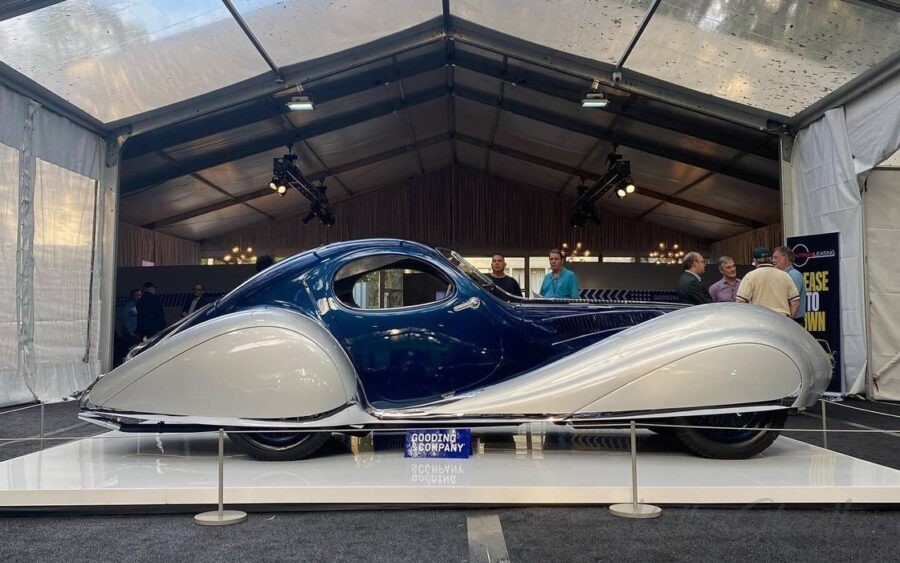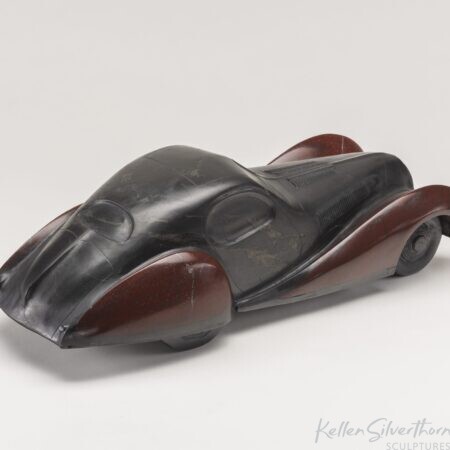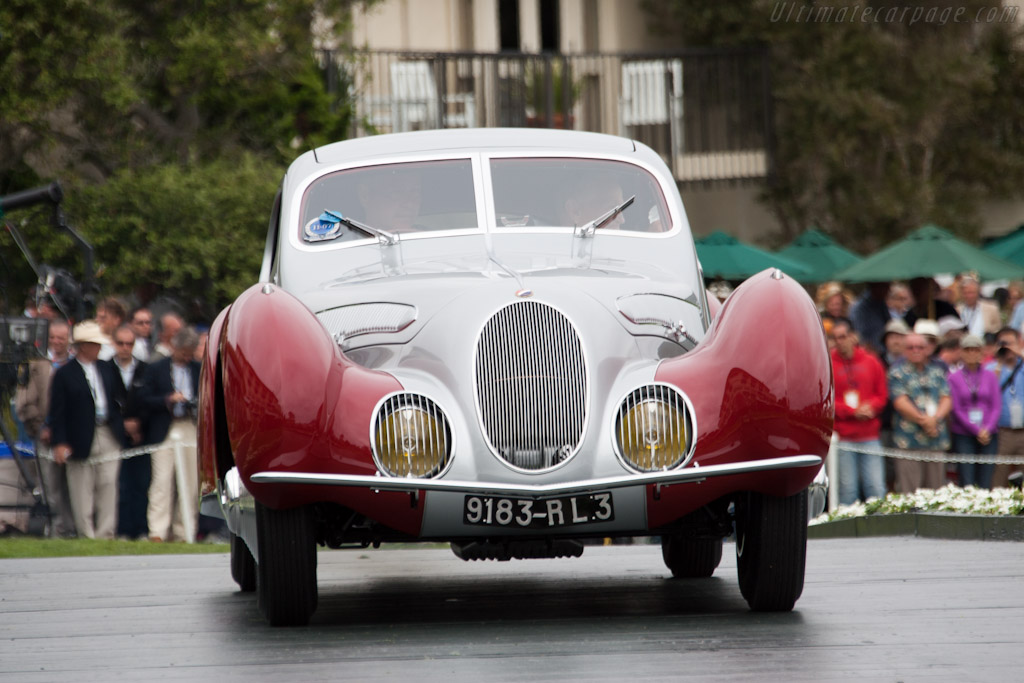FiFa-Lago – inspired by the Talbot Lago T150
hover and click over individual sculpture photographs to enlarge
THE CAR
Fine cars of the 1930s were still “coach-built”. After purchasing premium automotive frame-chassis and accompanying mechanicals, the customer sent the rolling chassis to the coach builder of their choice. Here the body was designed, built and installed. No 1930s coach builder was as influential and flamboyant as the Paris-based Figoni & Falaschi. (Hold that thought for the next few paragraphs.)
Antonio Lago was born in Venice in 1893, and raised in Bergamo. He qualified as an engineer, but had a falling out with the Italian fascists. He took jobs in the USA, and the UK, before obtaining control of the bankrupt Paris-based subsidiary of the English Sunbeam-Talbot concern in 1936.
Automotive history remembers the subsequent Talbot-Lago brand for two key reasons….. the achingly beautiful T150 Teardrop Coupe debut of 1937, and a decent run of success in F1 and 24-hour racing with their impressive inline six engine.
The zenith of Talbot-Lago’s racing success was an outright victory in the 1950 Le Mans 24 Hour race with the later T26 GS model. French drivers in a French car, winning the famously French race, is both rare and magical. However, production car sales and funding were a challenge throughout, with Lago selling out to Simca in 1958.
Walter Becchia was the engineer responsible for new 1930s models under Lago’s direction. The Talbot-Lago brand covered much of the mainstream premium market, from small to large, and pedestrian to sporting. The celebrated big engine, small car format 1937 T150 SS was series produced, with both factory and coach-built bodies. Lago saw to it that the stylish T150 model was promoted in Concours d’Elegance competitions, and in speed trials at the Autodrome Montlhery.
Figoni and Falaschi were the usual T150 coach builders and quasi in-house preference of Lago with their Teardrop Coupe. With its long louvered hood, creased-top fenders, elliptical suicide doors and side windows, hidden headlights, the close-coupled coupe had an Art Deco vibe. Or, perhaps Jules Verne.
Todays collectors certainly agree with prices for any of the 16 Teardrops made routinely in the multiple millions of US dollars. Examples of the T150 model have won Best in Show at every major modern Concours around the globe. I must agree as the T150 Teardrop is the first series-built car from the 1930s I elected to sculpt.
Guiseppe Figoni had been a creative automotive styling genius for years, particularly working with Alfa Romeos. In 1935 Figoni joined forces with the financial and administrative acumen of Ovidio Falaschi. Both were Italian born, but resided in Paris. Arguably, the pair were the apogee of high-style coach-building, which peaked in the 1930s. Post-WWII coachbuilding saw a general decline as ever-more chassis manufactures adopted in-house bodyworks.
THE STONE
One of the Teardrop Coupes on today’s Concours circuit sports silver bodywork with red-maroon fenders. Though the car is gorgeous in any color, this is the combination I choose to represent. It helps that this particular car sports solid wheels, as wire spoke wheels and stone representation don’t play nice together in the same sandbox.
Laguna Rosso marble is well known to me, and was the only consideration for inlaying the maroon-red fenders. This reddish marble from Turkish has white-gray-black veining and mottling. These fenders are among the most challenging inlays yet attempted in my work. I’m ecstatic with how they turned out.
The silver T150 main fuselage also charts new territory in my sculpting. Thanks to Stone’Eng Patrick, who sourced the graphite out of Sweden by way of Australia. As well, he did enough trials with the material to convince me of its promise for automotive sculpture This particular sample of graphite has occasional gold-bronze veining. The stone exceeded our expectation in the ease to work, its ability to hold edges and detail. At 400-800 grit the finish has a quasi-metallic appearance. I’m confident there will be more of my sculptures employing graphite.

Photo Credit Guide Auto / Gooding & Co
The name of the sculpture stems from the first two letters of the surnames Figoni and Falaschi, mashed up with Lago’s surname. Another name I considered for this sculpture was Teardrop. The French word for teardrop is Larme… not terribly catchy. The Italian word for teardrop is Lacrima, which somehow conveys a bit more passion, though jogs my memory of a past career, and loses some luster for me.











